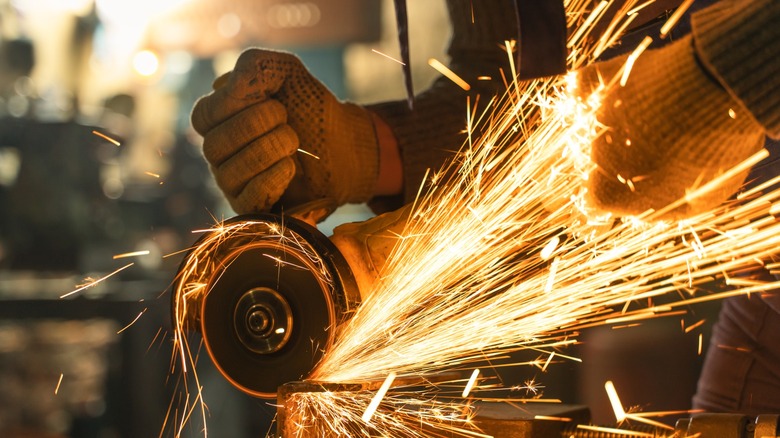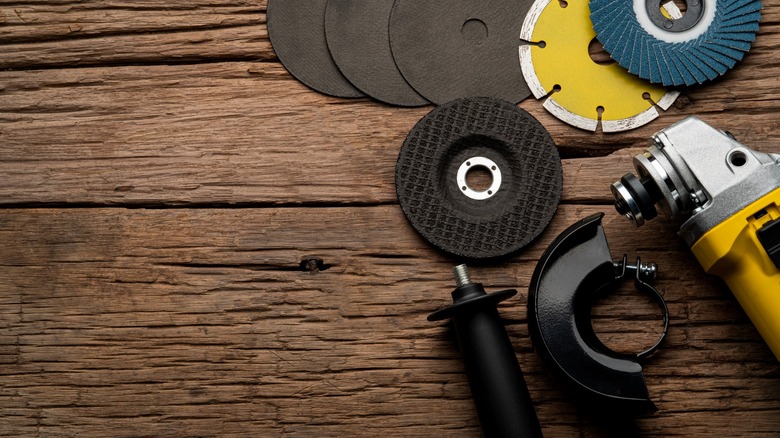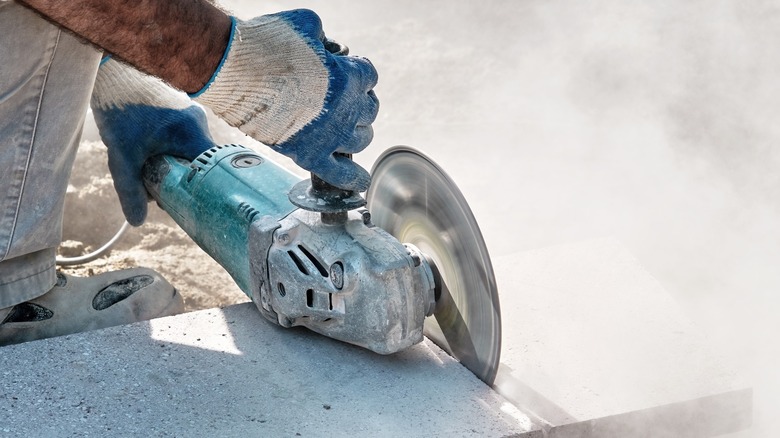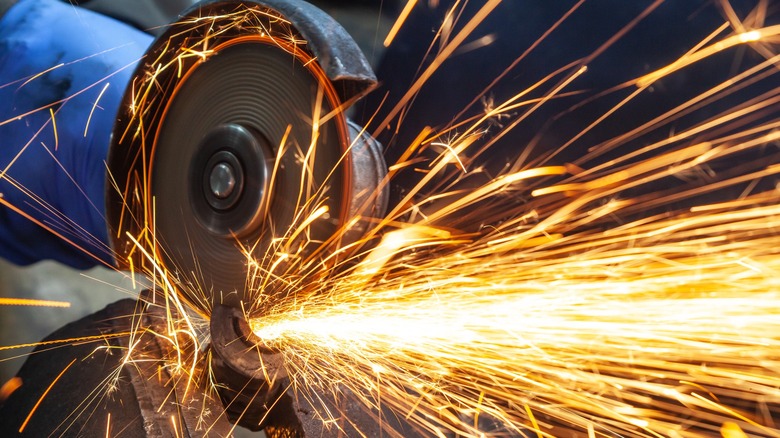What Size Discs Fit Ryobi's Angle Grinders & How Do You Replace Them?
We may receive a commission on purchases made from links.
Ryobi's line of corded and cordless grinders comes highly regarded by customers, with many four- and five-star reviews touting just how well they work. There's likely one thing all of those reviews have in common, too, and it's that every customer was using the appropriately sized disc for their specific grinder and task. It's the only way to guarantee an efficient (and safe) job well done, whether you're at a job site or polishing off a home project.
Each of Ryobi's grinders is rated with a maximum disc size ranging from 100 mm to 230 mm. Trying to go beyond the rated size poses a safety risk, as you would have to remove the guard to get it to fit. Using a larger disc may also go beyond the recommended peripheral speed, which means the disc would be spinning faster than it's intended. In general, larger discs have a lower speed.
So, how do you know what discs you should be buying for your Ryobi angle grinder? It's going to depend on the type of grinder and the task at hand. Since Ryobi has a fairly limited family of angle grinders, it can be easier to find the appropriate disc.
What disc size does my angle grinder use?
Since we're specifically talking about Ryobi angle grinders, we can easily determine which disc size you'll need. According to Ryobi's website, there are nine available models divided into four different sizes. Most of the brand's grinders have a maximum disc capacity of 125 mm or 5 inches with an inner diameter size of 22.2 mm. The smaller size of the discs makes this grinder ideal for DIY projects and making precision cuts. Models that fall into this category are the R18AG7-0, RAG18X, R18AG1, R18AG15, and RAG80125-G
The least common sizes are the 100 mm and 230 mm grinders, or models EAG75100-G and EAG2023RG, respectively. EAG75100-G has a maximum disc capacity of 100 mm or 4 inches and a 16 mm inner diameter. EAG2023RG has a 230 mm or 9 inch maximum capacity with a 22.2 mm inner diameter. Since the 230 mm and 125 mm share the same inner diameter or arbor size, the smaller discs can be used on the larger grinder.
Ryobi offers two 115 mm angle grinders, which have a maximum disc capacity of 115 mm and an inner diameter of 22.2 mm. However, neither of these models can work with any other Ryobi grinder discs because the smaller 100 mm disc doesn't share a similar arbor size. Since the 100 mm grinder has a different inner diameter, the disc won't safely fit and remain in place.
What to look for when fitting your disc
When replacing your Ryobi angle grinder's disc, there are a few things to be mindful of. We've touched on it briefly above, but every disc has a specific inner diameter. This is the hole at the center of each disc that fits over the spindle thread, or the threaded part that sits at the center of the grinder's head. If the diameter is larger or smaller than the spindle, it will cause an unsafe working environment. Similarly, the outer diameter of the disc can't brush up against the guard or require the guard to be removed.
There are two types of nuts that lock the disc in place: a tool-free locking nut and the pin spanner locking nut. While they both serve the same purpose, the former is much easier to install and doesn't require any tools. Instead, it has an adjustable lever that you'll use to tighten or loosen the nut. The alternative requires what's known as a pin spanner, a specialty wrench that has two pins sticking out. These fit into corresponding holes on the nut, making it easier to get leverage to securely tighten or fully loosen the nut without struggling. When it comes time to replace the angle grinder disc, you'll loosen the nut completely, remove the old disc, slip the new one on, and screw the nut back into place.
When should I replace my discs?
Toward the end of its lifespan, an angle grinder disc can become less efficient and possibly even dangerous to use. It's important to keep up with maintenance on your grinder, which includes knowing when to swap out older discs for newer ones. You can typically see the physical wear and tear on a disc, but if you're not sure whether or not you're seeing signs of an old, worn-out disc, there are a few telltale indicators that are difficult to ignore.
If you're using a cutting disc on the proper material, it should cut through fairly smoothly. If you feel it resist or vibrate, then it may be time to replace the disc. Wobbling while cutting can damage the material you're working with, as can working with a disc that isn't cutting as quickly. If your disc slows down while cutting or grinding, it can cause imperfections, chips, or even cracks that wouldn't have happened with a new disc cutting at full speed.
Chances are you know what your grinder sounds like while it's working. If you hear any unusual or unexpected noises, that may be your hint to stop working and check the status of the disc. Additionally, before starting any job, you should refer to the expiration date labeled on the disc. In case you haven't noticed yet, yes, grinder discs actually do come with a labeled expiration date. For your safety, you shouldn't use a disc beyond that date.



